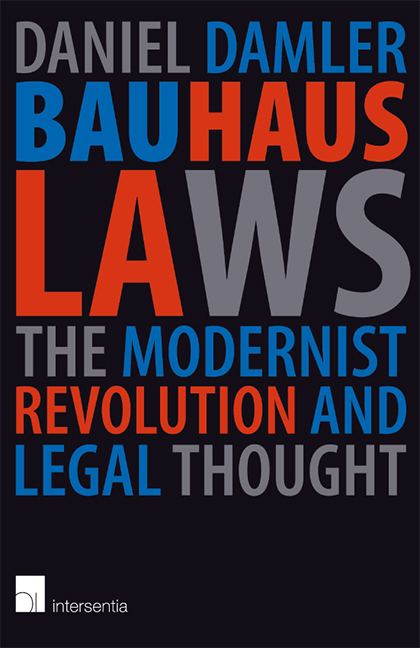Book contents
- Frontmatter
- Acknowledgements
- Contents
- Platonic Modernism: Introduction
- 1 Vienna 1900: Pure Legal Craftwork
- 2 Utopias Built with New Forms and Materials: Taut, Zamyatin, Le Corbusier
- 3 Hijacking Modernism: Bauhaus Values in the Third Reich
- 4 One-World Beauty: International Law and International Style
- 5 Regaining Sovereignty: “Transparency” in Postwar Germany
- Kandinsky's Laws: Epilogue
- About the Author
3 - Hijacking Modernism: Bauhaus Values in the Third Reich
Published online by Cambridge University Press: 15 November 2019
- Frontmatter
- Acknowledgements
- Contents
- Platonic Modernism: Introduction
- 1 Vienna 1900: Pure Legal Craftwork
- 2 Utopias Built with New Forms and Materials: Taut, Zamyatin, Le Corbusier
- 3 Hijacking Modernism: Bauhaus Values in the Third Reich
- 4 One-World Beauty: International Law and International Style
- 5 Regaining Sovereignty: “Transparency” in Postwar Germany
- Kandinsky's Laws: Epilogue
- About the Author
Summary
Modernity and fascism were long considered incompatible. This is not the case anymore. There is, however, a good deal of debate about how to assess this phenomenon and what to actually call it. Some authors have talked about “reactionary modernism,” others about the “ambivalence of modernity,” and still others about the “pathological developmental form of modernity,” “feigned modernity,” the “totalitarian side of modernity,” a “distinctive kind of modernity,” the “anti-liberal variant of the modernization process” or “paramodernity.”
The differences can partly be explained by the fact that each author has a different focus in mind, even though they all purport to give a valid picture of the overall era. Though Nazi modernism was certainly dubious in the areas of social policy and culture, its modern approaches to design, graphic design and architecture should not be dismissed out of hand because of it. The continuity of industrial design before and after 1933 is striking and well documented. This connection long went unnoticed, or was simply disregarded, on account of the Deutscher Werkbund and Bauhaus, in particular, being held up as symbols of a new, progressive and democratic “style” in the young Federal Republic. Bauhaus was one of the few traditions that could still pass as “untainted” at Zero Hour, allowing it, thanks to its considerable international reputation, to boost the bruised self-esteem of a Germany in the throes of defeat.
Indeed, the Nazis had immediately closed down the Bauhaus in 1933, having hitherto decried it as a breeding ground of “cultural flattening.” The “Degenerate Art” exhibition in Munich had exhibited the work of many renowned Bauhaus instructors and students, the likes of Johannes Itten, Lyonel Feininger, Paul Klee, Oskar Schlemmer and Georg Muche. In other areas, however, beyond the sphere of fine arts, Bauhaus alumni could hardly complain of discrimination after the Nazi takeover. This was true even for designers and architects whose résumés, at first glance, offered seemingly few points of collaboration. While it is correct that a number of leading Bauhaus representatives left Germany – Gropius in 1934 and Mies van der in Rohe 1937 – their reasons were not necessarily due to political or creative differences.
- Type
- Chapter
- Information
- Bauhaus LawsThe Modernist Revolution and Legal Thought, pp. 81 - 106Publisher: IntersentiaPrint publication year: 2019



